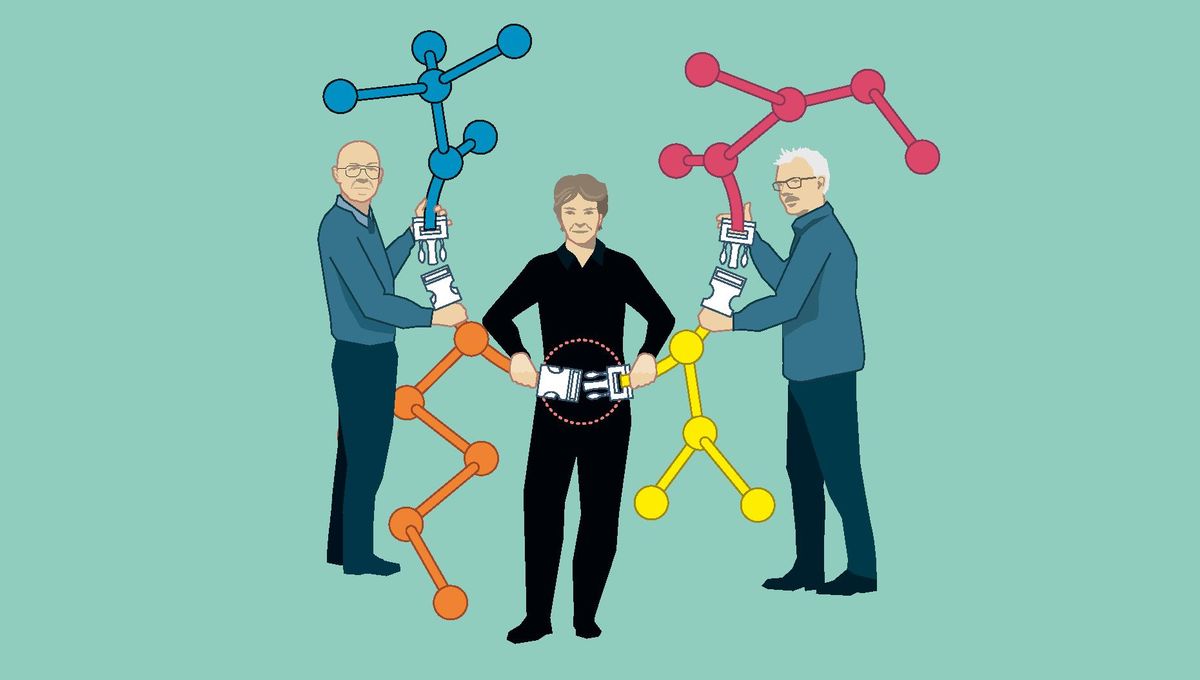
Creating new molecules underpins so much chemical research, plus many industrial fields from drug manufacturing to new materials. Improving these approaches has huge consequences – and the Nobel Prize committee recognized three people, among the many, that did just that.
The winners of this year’s Nobel Prize in Chemistry are Carolyn Bertozzi, Morten Meldal, and Barry Sharpless. The motivations for it is the development of click chemistry, and subsequently the development of bioorthogonal chemistry.
“This year’s Prize in Chemistry deals with not overcomplicating matters, instead working with what is easy and simple. Functional molecules can be built even by taking a straightforward route,” Johan Åqvist, Chair of the Nobel Committee for Chemistry, said during the press conference.
The idea behind click chemistry is indeed remarkably easy and simple: Is it possible to make molecules just click together? The idea of a belt buckle comes to mind. The answer is yes, it is possible. You just need the right tool such as a catalyst (something that can speed up a reaction).
Meldal and Sharpless independently arrived at what is now considered the pièce de resistance of click chemistry: the copper-catalyzed azide-alkyne cycloaddition. This chemical reaction allows the reliable production of molecules without the creation of unwanted byproducts.
The approach is commonly used in industry where it has been used to make better materials, develop drugs, and even map DNA. However, the biological use of this technique truly found its revolution with the work of Bertozzi and her team.
This is what Bertozzi did with the creation of bioorthogonal chemistry. The new Nobel laureate saw the potential of using the click chemistry approach to study the behavior of glycan on the surface of cells by attaching “molecular trackers”. She was able to find these reactions that create these trackers without disrupting the regular biological processes.
The bioorthogonal reactions are now commonly used around the world to explore cellular processes and they are even being employed to create cancer drugs that can target the diseased cells better. Some of these are being tested in clinical trials.
The prize is worth 10 million Swedish kronor (about 896,000 US dollars) and it will be shared among the winners. Bertozzi is the eighth woman to win this award out of 191 individual recipients. Sharpless previously won the Nobel prize in Chemistry in 2001.
Source Link: Making Molecules Click: The 2022 Nobel Prize In Chemistry Explained